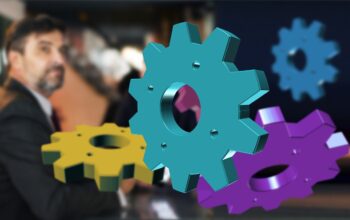Have you ever thought of making your hectic workday feel a bit more like play? Welcome to the latest trend in modern workspaces: workflow games. Think of them as digital board games for grown-up professionals—where task management, project tracking, and teamwork aren’t just necessities, but part of a playful, rewarding challenge. These games aren’t just for fun; they’re designed to make sense of complex work and bring teams together. Let’s dive into five trending games in the category of ‘Workflow’ and see how real companies are using them to boost efficiency and morale.
1. Monday.com: Turn Work into a Visual Game Board
Imagine your project as a giant board game, where each task is a space you can move forward with a simple drag-and-drop. That’s Monday.com, a platform trusted by over 180,000 companies globally. Teams use customizable boards to build quests (aka projects), assign tasks to players (their teammates), and collect points (milestones or reviews) as they progress.
Take, for instance, a marketing agency that switched to Monday.com to manage campaign rollouts. The team leader set up weekly challenges: “Who can complete their creative brief fastest?” or “Who can collaborate with the most departments this sprint?” As tasks got done, team members could visualize their own progress bar filling up, earning small rewards or shout-outs in weekly meetings. The result? The agency saw a noticeable jump in engagement and efficiency—tasks that once slipped through the cracks were now completed on time, as if everyone was racing to be the next game champion.
2. Wrike: The Workflow Adventure Quest
Wrike is like an epic adventure quest for project management, used by teams in companies like Spotify and Fitbit. In its workflow environment, tasks and projects become missions—each team member plays their role as adventurers or guild leaders, unlocking achievements as goals are met.
Picture this: a tech startup used Wrike to manage product launches. Each launch was divided into levels (phases), and each team member had specific missions (tasks) to accomplish. The team could track their quests in real time, cheer each other on, and work together in a connected hub. With features like cross-team collaboration and live analytics, teams felt like they were on an exciting quest together, not just ticking off mundane checklists.
3. Kahoot!’s Workplace Challenges: Learning the Ropes by Playing Along
Kahoot! is best known for classroom quizzes, but its workplace challenges have become a hit for training and onboarding. Teams create multiplayer trivia about company processes, safety protocols, or product updates, and then compete to answer fastest and most accurately—bonus points for witty nicknames and creative avatars.
One real-world example comes from a telecommunications company that used Kahoot! to train new hires on their complex support workflows. Instead of boring PowerPoints, new staff played a quiz game about common customer scenarios, company policies, and workflow tips. The result? New employees absorbed information faster and felt more connected, all while having a blast.
4. Miro’s AI-Powered Catch-Up: Unravel the Mystery of Task Updates
Miro’s latest feature, Catch Up (BETA), is a game-changer for workflow transparency. In this game-like environment, teams can quickly catch up on project changes using AI-powered visual summaries and highlights, almost like unlocking hidden clues in a detective story.
At a creative agency, designers and project managers used Miro’s “Catch Up” to stay on top of board changes. Every morning, team members would get instant, bite-sized updates—think a newsfeed, but for project progress—helping them prioritize and act on the most important updates, rather than hunt for needles in the project haystack. The game-like structure made it feel like they were solving a mystery, not just catching up on paperwork.
5. Team-Building Sims: Build, Collaborate, Succeed Together
Beyond software, companies are using team-building simulation games to practice workflow mastery in a risk-free environment. One popular example is the “Escape Room” style challenge, where groups are given a fictional business crisis and need to coordinate across departments to “escape” (solve the problem) before time runs out.
A real-world story comes from a financial services firm that hosted a virtual escape room centered on a customer onboarding workflow. Each team had to collect clues (customer information), assign roles (processor, reviewer, manager), and pass through checkpoints (process steps) within a set time. The winning team not only earned a prize but also learned new ways to streamline their workflows under pressure—lessons that carried over to their real jobs.
Why These Games Work
These workflow “games” aren’t just child’s play; they’re built to mimic the drama, unpredictability, and collaboration that real work throws at us every day. By turning project charts into quest maps, updates into clues, and milestones into achievements, these games help teams:
- Stay Engaged: Nothing beats the buzz of seeing progress bars fill up or hearing the “ding” of a completed quest.
- Boost Transparency: Workflow games let everyone peek behind the curtain, so misunderstandings or bottlenecks are caught early.
- Encourage Collaboration: When tasks feel like team missions, silos break down and creativity flourishes.
- Make Learning Fun: Whether onboarding or mastering new tools, learning is easier when it feels like play.
So, next time your workflow feels overwhelming, try turning it into a game—who knows, you might just end a hectic day with a grin and a win.
References:
- https://thedigitalprojectmanager.com/tools/best-workflow-automation-software/
- https://meetglimpse.com/trends/gaming-trends/
- https://www.unite.ai/best-ai-game-generators/
- https://kissflow.com/workflow/how-to-automate-workflows-with-ai/
- https://www.gameanalytics.com/index.html
- https://www.remocate.app/jobs/ad-creator
- https://theretailexec.com/tools/best-ai-inventory-management-software/
- https://news.ycombinator.com/item?id=44127739



